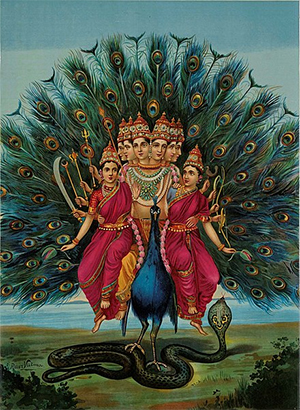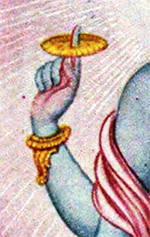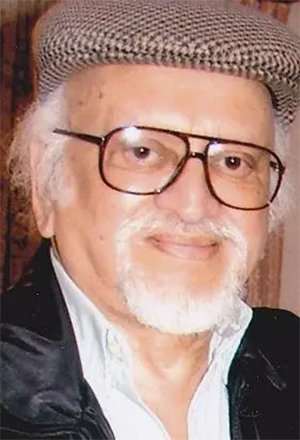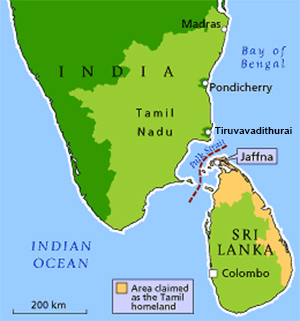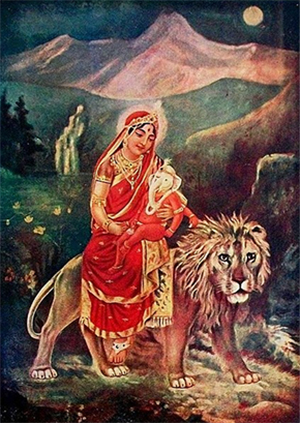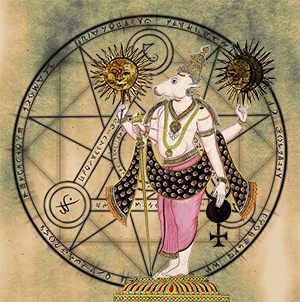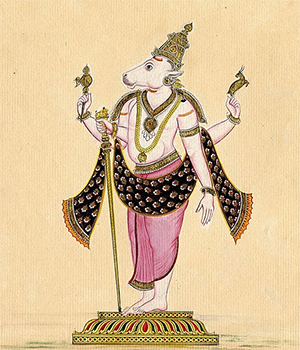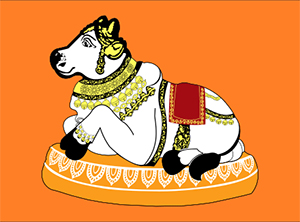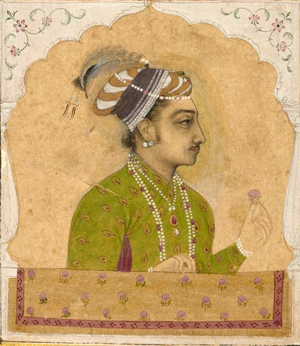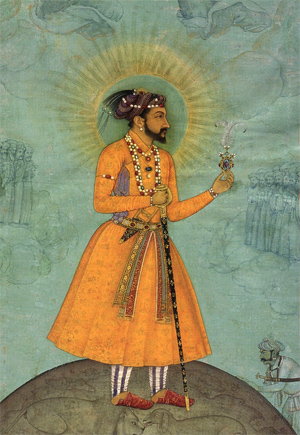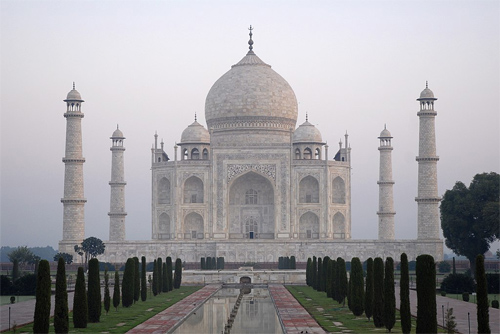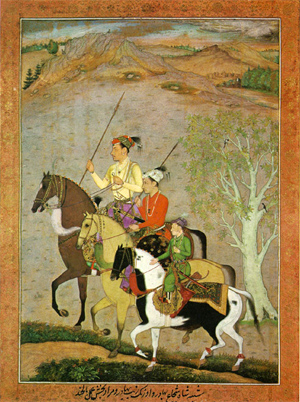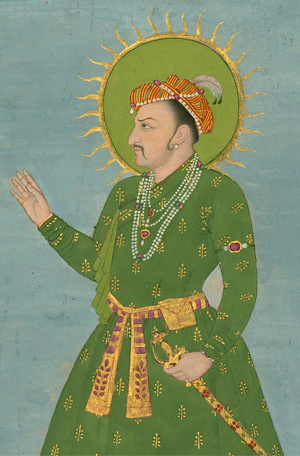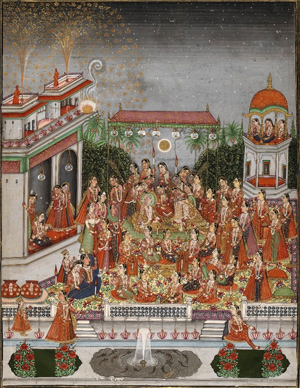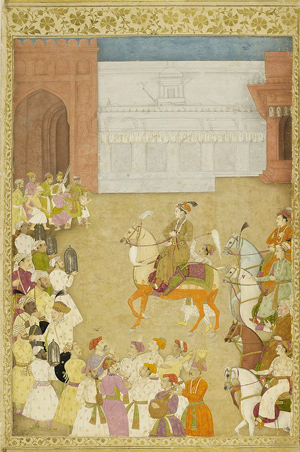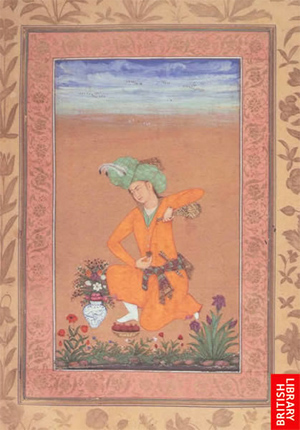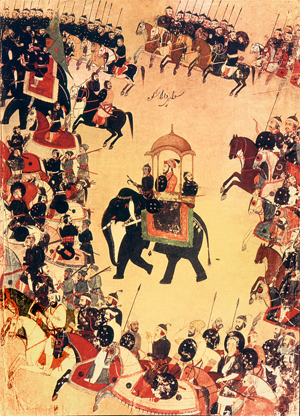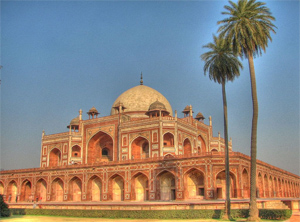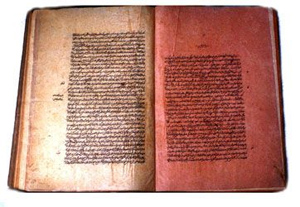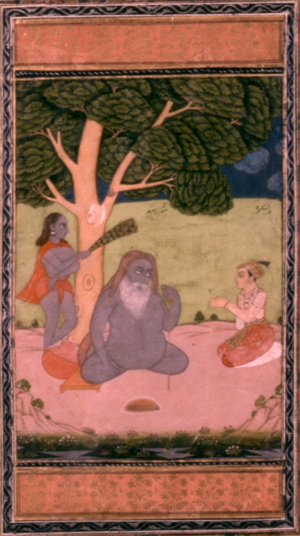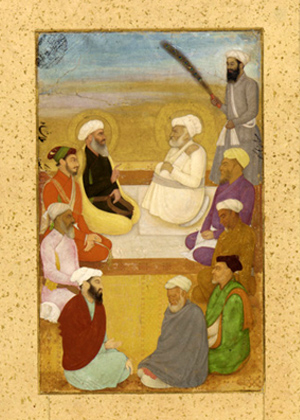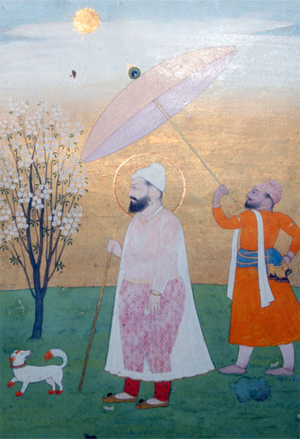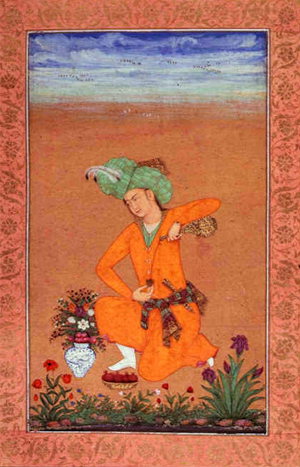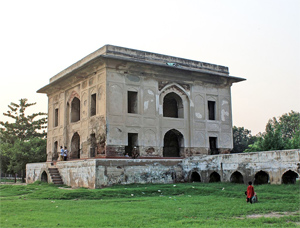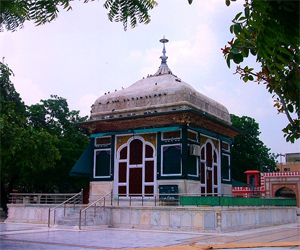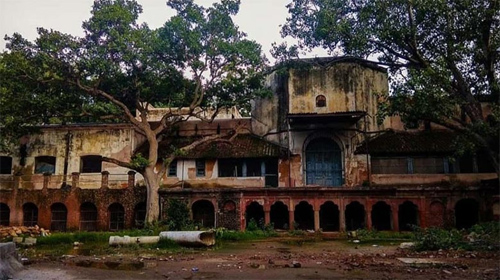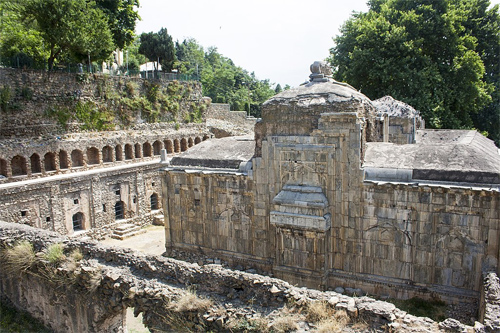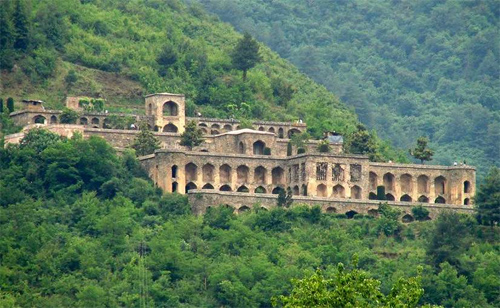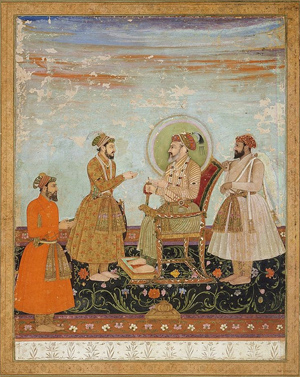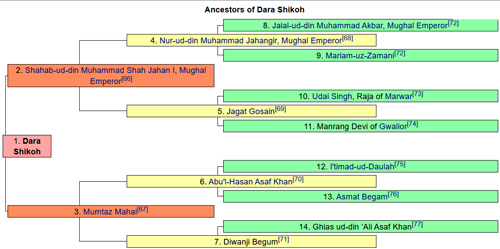by Krishnamurthy GovindaReddy
Wikipedia
Accessed: 4/11/22
How also could Hermes be thought of as the reason which both makes and interprets all things, when he confesses that he had for his mother Maia the daughter of Atlas, thus sanctioning the fable that is told concerning him, and not any physical explanation?
So again, how could Asclepius be changed into the sun, when he lays claim to Tricca as his native place, and confesses that he was born of a mortal mother? Or how, if he were himself the sun, could be represented again as a child of the sun? Since in their physical theory they made his father Phoebus to be no other than the sun.
And is it not the most ridiculous thing of all, to say that he was born of the sun and a mortal woman? For how is it reasonable that his father, the sun, whom they declare to be Apollo, should himself also have been born in the island Delos of a mortal mother again, namely Leto.
WHEN poets therefore, as they say, invent legends concerning the gods, while philosophers give physical explanations, we ought, I suppose, rightly to despise the former, and admire the latter as philosophers, and to accept the persuasive arguments of this better class rather than the triflings of the poets. But when on the other hand gods and philosophers enter into competition, and the former, as likely to know best, state exactly the facts concerning themselves in their oracles, while the latter twist their guesses about things which they do not know into discordant and undemonstrable subtleties, which does reason persuade us to believe? Or rather is this not even worth asking?
If therefore the gods are to speak true in certifying the human passions attributed to them, they who set these aside must be false; but if the physical explanations of the philosophers are true, the testimonies of the gods must be false.
But even Apollo himself, it may be said, somewhere in an oracle, when asked about himself who he was, replied:
'Osiris, Horus, Sun, Apollo, Zeus-born king,
Ruler of times and seasons, winds and showers.
Guiding the reins of dawn and starry night,
King of the shining orbs, eternal Fire.'
So then the same witnesses agree both with the poets' legends and with the philosophers' guesses, allying themselves with both sides in the battle. For if they ascribe to themselves mortal mothers, and acknowledge their native places upon earth, how can they be such as the physicists describe them?
Grant that Apollo is the sun----for their argument will again be caught running backwards and forwards and round to the same place----how then could Delos, the island which is now still seen at sea, be the native place of the sun, and Leto his mother? For this is what his own oracles just now certified as being true. And how could the sun become the father of Asclepius, a mortal man by nature, having begotten him of a mortal woman? But let us put this subject aside.
-- Praeparatio Evangelica (Preparation for the Gospel), by Eusebius of Caesarea
Who were these "numerous Indians" who in a short timespan wrote so many letters to Ziegenbalg and insisted so stridently on the monotheism of Indian religion that god-fearing Europeans including Voltaire were astonished? And who were these Gnanigol, the authors of the Indian texts whose translations so much inspired Ziegenbalg, La Croze, and their readers?...
Aleppa also mentioned radical monotheists:Other than that, there are also people among us who worship God the supreme being alone and always honor only this lord while they renounce everything in the world in order to keep contemplating God in their heart at all times. It is said of these [Gnanigol] that God unites with them and transforms them into himself [in sich verwandele], and also that they become invisible in the world. (p. 142)...
The text that Ziegenbalg most often quotes to illustrate Indian monotheism was already used by de Nobili for the very same purpose: the Civavakkiyam, a fourteenth-century collection of poems by Civavakkiyar who belongs to the Tamil Siddha tradition.
Although the Tamil tradition speaks of eighteen Siddhas and posits a line of wandering saints and sannyasis from Tirumular (sixth century) to Tayumanavar (1706-44), most of the noted Siddhas flourished between the fourteenth and eighteenth centuries (Kailasapathy 1987:387). From the beginning, the antibrahmanical and antihierarchical tendency of Siddha writings was prominent, as in Tirumular's oft-quoted lines, "Caste is one and God is one" (p. 386)....Tirumular meant that "insofar as religious worship was concerned, all castes are equal and the only god is Shiva" (p. 386)....
Of the more than fifty names associated with the way of the Siddhas (Siddha marga), that of the author of the Civavakkiyam (Aphorisms on Shiva) is best known. The author of these aphorisms, Civavakkiyar or Sivavakkiyar, is "without doubt the most powerful poetic voice in the entire galaxy of the Siddhas" and is best known for his skill in criticizing and ridiculing Hindu orthodoxy (p. 387-89). Though not forming a well-defined school of thought, the Siddhas "challenged the very foundations of medieval Hinduism: the authority of the Shastras, the validity of rituals and the basis of the caste system" (p. 389). According to Zvelebil, "almost all of them manifest a protest, often in very strong terms, against the formalities of life and religion; denial of religious practices and beliefs of the ruling classes" (1973:8). Tamil Siddhas were basically "all theists and believed in a transcendental God and his grace towards man," but they were not "idol-worshippers or believers in a supreme Person"; rather, they "believed in a supreme Abstraction" that they referred to as civam (Kailasapathy 1987:393).The recurrent use by the Siddhas of the word civam (an abstract noun meaning "goodness," "auspiciousness" and the highest state of God, in which he exists as pure intelligence) in preference to the common term civan (meaning Shiva) makes this point very clear. In other words, they believed in an abstract idea of Godhead rather than a personal God. (p. 393)
Among the three Hindu religious paths to salvation (jnana, the way of knowledge; karma, the way of work; and bhakti, the way of devotion), the Siddhas emphasized the path of knowledge (p. 393). In the light of such explanations, it is easy to see why de Nobili and Ziegenbalg felt attracted to such poetry and in particular to Civavakkiyar who dared to refute deeply entrenched dogmas such as transmigration:...The dead are never born again, never! (p. 401)
Siddha Civavakkiyar's work promotes civam mysticism and is critical not only of the worship of images and brahmans but also of the Vedas and Vedic practices....In the Four Eternal Vedas,
In the study and reading of scripts,
In sacred ashes and in Holy Writs
And muttering of prayers
You will not find the Lord!
Melt with the Heart Inside
and proclaim the Truth.
Then you will join the Light --
Life without servitude. (Zvelebil 1973:83)
Such Tamil Siddhas belonged to the class of men that Ziegenbalg referred to as "Gnanigol or the Wise" (Ziegenbalg 2003:40). "Gnanigol" is Ziegenbalg's transcription of the Tamil nanikal, which is the plural of nani (Skt. jnanin, a wise or knowing one). They are saints in the fourth path (pada) of Shaivite Siddhanta agama. Ziegenbalg called these four paths "Tscharigei" (carya, proper conduct), "Kirigei" (kriya, rites), "Jogum" (yoga, discipline), and "Gnanum" (jnana, knowledge). The Gnanigol are most frequently mentioned by Ziegenbalg, and quotations from their texts make up the bulk of his evidence for Indian monotheism. In the first chapter of his Genealogy, where he discusses the pure Indian conception of monotheism, Ziegenbalg explains:One still finds here and there a few who destroy all idolatry [Gotzen-Wesen] and venerate this sole divine Being without images. Among them are those called Gnanigol or the Wise who have written only such books that lead exclusively to a virtuous life wherein only the sole God is to be worshipped. The most excellent among such books are: I) The Tschiwawaikkium [Civa-vakkiyam], in which polytheism along with many heathen errors is totally rejected in thoughtful verses and the worship of a single God is advocated....
The book that leads this list, the Civavakkiyam, is also the one that Ziegenbalg most frequently adduced in his discussions of Indian monotheism. La Croze's argument for Indian monotheism, too, is almost entirely illustrated by quotations from Ziegenbalg's rendering of verses by Civavakkyar....
[Re] Malabar heathendom...Ziegenbalg...distinguishes two main traditions:This whole widespread heathendom is divided into two important main sects. The first sect is called Tschiwasameian [Civacamayam; system of Shiva] and the second Wischtnusameiam [Visnucamayam; system of Vishnu]. All those who belong to the first sect regard Shiva or Ishvara as supreme God and pray to all gods that he befriended or stem from his lineage. In all their sacrifices, prayers, external ceremonies, fasts, and tenets [Lehrsatzen] they follow those books which are written about Shiva. All who belong to this sect smear ashes from burnt cow-dung on their forehead and on various parts of their body. (p. 23)...
As we have seen, these four stages on the religious path are "Tscharigei" (carya, proper conduct), "Kirigei" (kriya, rites), "Jogum" (yoga, discipline), and "Gnanum" (jnana, knowledge)...the fourth for those who have abandoned everything and reached "Gnanum or wisdom" (Ziegenbalg 1926:27). This fourth and highest stage is that of the Gnanigol who have left behind all ignorance (ajnana) and who for Ziegenbalg represent the purest wisdom (jnana) of monotheism:Those who have thus become Gnanigol not only consider the ways of the world as foolish but also every other thing in which people seek bliss. They reject the many gods that others revere so much; as one of them writes in a book called Tschiwawaikkium [Civavakkyiam]: You are nothing but lies, prayer-formulas are lies, the disciplines of erudition are lies. Bruma and Wischtnum [Brahma and Vishnu] are fabricated lies, and Dewandiren [Devendra] too. Whoever abandons the lusts of the flesh that seem sweet as honey, dies to that which seems beautiful to the eyes, and hates the habits of man while worshipping only the True supreme being: to him all of these things appear as false and full of lies. (pp. 27-28)
Such saintly Gnanigol, Ziegenbalg emphasized, are found among both the worshippers of Shiva and those of Vishnu; "they lead a virtuous life after their fashion, worship only the supreme being of all beings, and lead their disciples and pupils toward a worship of God that is completely interior (p. 28)....
Ziegenbalg linked these four stages of the religious path to the four Vedas, about whose content he knew practically nothing:...4. Gnanum. The first law (Veda), according to some, contains what the Tscharigeikarer or people of worldly professions ought to do in order to reach bliss through their worldly tasks. (p. 35)...
"the fourth book of law is said to contain everything which the Gnanigol who have reached wisdom and sainthood ought to perform and do...."
In La Croze's discussion of these sages, several pages of translations from Tamil Siddha (Gnanigol) texts are adduced as proof that ancient India was indeed a repository of the world's original monotheism. La Croze had read in Ziegenbalg's Genealogy of Malabar Divinities that Indian monotheism was likely to be "a very ancient affair" since the Indians have books "that are said to be more than 2,000 years old" and regard their religion as "the oldest of them all" (Ziegenbalg 2003:37-38). Ziegenbalg also regarded Indian monotheism as old enough to have begun "not very long after the deluge" (p. 38), and it is no surprise that the Gnanigol described by Ziegenbalg appeared to La Croze as heirs of the world's oldest religion, the religion of Adam and Noah, who had safeguarded its pure "inner cult."
But if the religion of the Gnanigol is the heir of the oldest religion of India, what is its relation to the Brahmans and the other Indian religions mentioned by Ziegenbalg? Given that the Gnanigol attacked central facets of Ziegenbalg's Malabar heathendom and fiercely criticized Vedic authority, the caste system, the Brahmans, etc., it was puzzling that they represent the fourth and highest stage of Malabar heathendom, are entrusted with the fourth Veda, and are revered by both of its great branches as saints. Such questions must have bugged La Croze as he read Ziegenbalg's manuscripts ...
-- The Birth of Orientalism, by Urs App
The Siddhar called Sivavakkiyar is considered to be one of the eleven Siddhars. There is no evidence that he belongs to my country.
It is widely believed that he is from Tamil Nadu. He has got 526 songs so far in his Siddharth song collection. Many of his songs are very popular. References about him can also be found in Abidhana Chintamani TV. Sampasivam Pillai is also in the Tamil-English Medical Dictionary written by them. But since the two are completely different and there is no proper evidence for these stories, only the songs composed by him are appreciated.
It is not clear how long he lived. Mr. DS Kandasamy Mudaliar has said that his period may be 9th century AD and that his style of prose is similar to that of Tirumula in many places. There are those who argue, "No; he lived in the 10th century AD. What is his period? What is his religion? Finding answers to these questions is a waste of time.
He deeply studied the religions of Jainism, Buddhism, Veganism and Maliyam (Vaishnavism) and squeezed them in his pockets. What is special about his poems is that they have a kind of hopping sound, wisdom ideas and questions (questions). For example, God looks at those who worship him as pagans and asks a series of questions.
சிவவாக்கியார்
"Koyilava Thedada Kulangalava Thedada
Koilum Kulangare Kulamare Koilum Manatule Pools Manattule
Avatu
Malivatu Millaiyilla Yillaye."
Poosaipusai is a water-worshiping ghost-worshiping deity who worships himself.
Did the sick take life? Did life take a toll?
What was the figure when the sick man took his life?
How did the body mix before urination?
What are the reasons before conceiving?
Atma Vanadhi or Vathuma Vanadhi. The enlightened yogis must elaborate on the enlightened senses of Manas or the satasiva manadhi of influential texts.
அக்கரம் அனாதியோ? ஆத்துமம் அனாதியோ?
Are the trolls and the fields orphaned?
The antidote to the incarnation of the living deity
உயிர தாவ தேடடா உடம்ப தாவ தேதடா
Do not try to unite life and body
Doesn't the sage tell the truth embodied by life?
"Knowing Shiva is one; the mouth of the ignorant is dust." Confirming the motto, he maintains the position of Shiva as Shiva running in the body. There is no dearth of rational ideas in their poems. He slammed the atrocities committed in the name of the Lord, the caste system, the teaching of the image of the Lord, the belief in reincarnation, the sorcerers, and the false priests.
Let us see what are the texts composed by Sivavakkiyar.
Everyone knows, Gnanayoga Puratsi songs composed by Sivavakkiya Siddhar; Only 520 songs released in the Great Encyclopedia. Beyond that some texts have been published. Glad to share it with you.
1. Sivavakkiyar Songs 500 [1]
1 . Sivavakkiyar Songs 500 [2]
As part of the Great Encyclopedia of 1927, a total of 518 Sivavakkiyar songs have been published without commentary. The 2016 edition of the same great encyclopedia has released 550 Sivavakkiyar songs.
Similarly, in 1933, Mankadu Vadivelu Mudaliar published 519 songs with * commentary * by Ratna Nayakkar and Sons. Yet that explanation is not satisfactory. It has been released under the title Great Sivavakkiyar Song.
2. Sivavakkiyam 1000 [3]
The book of 1000 songs was published by Sirumanavoor Munusamy Mudaliar in 1903 at Sivagami Vilasa Press. This includes medical news and medicine.
This includes the above 550 songs. The explanation for this has not yet been released
3 . சிவவாக்கியர் நாடி 31
This book has been published as part of a book called Eleven Siddhar Nadi Shastras. This is a book that gives wisdom on rhetorical bile doubts.
4 . சிவவாக்கியர் 100
It contains only a hundred songs. It was published in 1925 by P. W. Namachchivaya Mudaliar. These hundred songs are among the thousands of songs I have already seen.
5. Sivavakkiyar avathi oil
It is found that only four songs were composed by Sivavakkiyar in the book Eleven Siddharth Vaidya Siroratna Dance Kandam 1500.
6. Sivavakkiyar 1200
Information about this can be found in the book Panchakaviya Nikandu. This thread is not available.
This can be considered as the great book of Sivavakkiya. It is worth exploring whether Sivavakkiyar 1000 is part of this book.
7. Sivavakkiya Mantra.
8. Sivavakkiyar cure.
9. Sivavakkiyar Sutra-33.
Mohanraj, a former psychiatrist, has posted on his website that all three books are e-books. The glory and significance of these texts will be known only when they are published.
10. Sivavakkiyar development
Subashini (Tamil Heritage Foundation) claims to have copied the book from the Royal Library, Copenhagen, according to the Tamil Heritage Foundation's website. Have these already come out only if they come out? Isn't it Is revealed. [4]
உசாத் துணை Edit
Ira Ilangumaran, Siddhar Songs: Sivavakkiyar, Saiva Siddhantha Nurupathippuk Kazhagam, Chennai, 1984, Pages 1 - 126
Texts composed by Sivavakkiyar
1. Siddha Medical Texts Research-1" . Sivavakkiyar and Siddha Medical Texts Research-1 . Accessed 2021-05-07 .
2. Siddha Medical Texts Research-1" . Sivavakkiyar and Siddha Medical Texts Research-1 . Accessed 2021-05-07 .
3. Siddha Medical Texts Research-1" . Sivavakkiyar and Siddha Medical Texts Research-1 . Accessed 2021-05-07 .
4. Siddha Medical Texts Research-1" . Sivavakkiyar and Siddha Medical Texts Research-1 . Accessed 2021-05-07 .
*************************
Sivavakkiyar Biography
by PoemHunter.com
Accessed: 4/11/22
Sri Sivavakkiyar (sometimes Civavakkiyar) was a great Tamil Poet who lived in the period preceding the 10th Century A.D.
Sivavakkiyar was an early rebel against the Brahmanic order, he was resolutely opposed to the Caste system and was opposed to idol worship and temple ceremonies. His rebellion against any kind of orthodoxy meant his work was left out of the Saiva canonical literature however some of his poetry is well read in Tamil literary compendiums.
Sri Sivavakiyar, was born with Lord Shiva's name on his lips. He said that the constant repetition of the Lords name would even turn ones body into gold. A great rennuciate he is said to have lived for over 4,000 years. His works include Naadi Parikshai and Sivavakiyar 1000.
He came to Kasi after learning vedas. There he met a Siddhar/Seer/Saint, who was also a cobbler. Though the Saint/Siddhar could sense the power of Sivavakiyar, he wanted to test him. So he gave Sivavakiyar some money and asked him to give it to his sister, 'River' Ganga. He also gave him a bitter Bottle Gourd and asked him to remove the bitterness from the Bottle Gourd. Sivavakiyar immediately left for the river bank without any second thoughts on whether the tasks can be completed or not. After he reached the banks, a beautiful hand raised above the water and Sivavakiyar without any second thoughts placed the money on the hand. The hand returned back into the water. He also washed away the bitterness from the bottle gourd and took it back to the Siddhar. The Siddhar was happy to see that Sivavakiyar had passed the test. He wanted to test him once more. So he gave Sivavakiyar a waterbag and instructed Sivavakiyar to call out for Ganga and ask for the money that he had given her earlier. Sivavakiyar at once called out to Ganga asking for the money. Immediately a beautiful hand appeared from the waterbag and gave him back the money. Sivavakiyar, without being perturbed even for a single moment, took the money and gave it to the Siddhar. The Siddhar was really impressed on Sivavakiyar's ability to focus without being bothered by doubts or anxiety. Then he asks Sivavakiyar to lead a family life till he attains samadhi. He also gives him some sand and a bottle gourd and says that the lady who cooks both the sand and the bottle gourd would be his wife.
After taking leave from the Siddhar, Sivavakiyar continues his pilgrimage. In the midst of his travel, he meets a Nari Kurava (Gypsy) group and they welcome him wholeheartedly. After talking to them for some time, a lady from Nari Kurava gang rushes up to him and says that she will be happy to serve him and that he should not hesitate to ask for her help. Sivavakiyar immediately gives her both the sand and bottle gourd and asks if she could cook both sand and bottle gourd together. The lady without hesitating a moment, takes both and rushes to the kitchen. After some time she comes back with cooked rice (the sand has turned into rice) and bottle gourd curry. Sivavakiyar immediately realizes that he has met his wife and asks the group if he could marry her. They also agree to the proposal on the condition that he also stays and travels with them. He also agrees and marries his lady. But he also makes sure that he does continues with his spiritual practises.
Siddhar Sivavakiyar continued to stay with the Gypsy group and also diligently learnt their work. Once he went to the forest to get firewood. He chose a tree and started to cut. Suddenly Gold Dust started sprinkling from the tree. After seeing this he started to run shouting that "Lord Yama" (Angel of Death) has arrived. His group asked him what happened and he told them what he saw. Hearing this some 4 people left for the forest with gunny bags to collect Gold Dust. By the time they had filled their bags it started to darken. Since they were hungry, it was decided that two of them would go to the nearest village to get food. Those who went to the village planned to kill their partners who had stayed behind, so they added poison to the food. And the two persons who had stayed behind also plotted against the other two partners who had gone to get food. On their way back to the forest, the two persons who had gone to collect the food were done to death by the other two persons. After killing their partners, they sat down to have their food and in no time they also passed away. Next day Sivavakiyar saw the four bodies and felt sorry that these four people had lost their lives to "Lord Yama" (i.e. the Tree).
Sivavakiyar had a friend with the name Konganar, who was also a great Siddha. Konganar felt very bad that his friend, who is a Master Siddha, was living a life of poverty. So one day, he went Sivavakiyar's home, knowing that Sivavakiyar would not be available. He asked Sivavakiyar's wife to get some Iron and turned the same to Gold and left after handing over the Gold to her. Sivavakiyar's wife narrates the incident to him after his return. Sivavakiyar asks his wife on whether she wants the Gold. His wife replies that his love is all that she wants and not the gold. Then he asks his wife to drop the gold in the well and his wife also obliged wholeheartedly.
One day few devotees of Siva came to Sivavakiyar and asked whether he would teach them to make Gold, so that they could eradicate poverty and this also will help in removing negative Karma. Hearing this Sivavakiyar laughed and asked why Gold is required for removing negative Karma. He also advised them to leave behind all materialistic desires and merge their consciousness with Lord Siva. And added that this is the only way to attain Nirvana.
It is believed that he was an Atheist who later converted to Saivism and then to Veera Vaishnavaism.[!!!] He attained Siddhi at kumbakonam. Even now pujas are regularly conducted especially on Full Moon Day. Those who pray to him are blessed with clear mind without any anxieties or worries about the past or future. One can pray to Sivavakiyar on Mondays, wearing white clothes and with white flowers. This is told as a remedy for those people with Chandra Dhosham.
What is Chandra Dosha?
According to Vedic Astrology, the Chandra Dosha is formed when Moon is ill-posited in the horoscope. There are many planetary positions for the Moon to be afflicted or weakened. However, the most factor that forms this dosh is the conjunction of Rahu and Moon.
The combination of Rahu-Moon in the horoscope is known as Chandra Dosha. This state is also called Grahan or eclipse. Simply, if Rahu is posited with the Moon. A person who has Chandra Dosh in their Kundali suffers a great deal of emotional struggle. They are often distracted and unsure.
-- Chandra Dosha- How Does It Affect and Remedies, by Deepa, August 8, 2020
He was generally considered to be an iconoclast because he vehemently decried temple worship. He did so no doubt, but he said still more vehemently that man should make his heart the temple of God. He had scant respect for rituals which in popular belief had become a substitute for love and service to God and to fellow beings. He was a vehement opponent of caste. Almost all the siddhas believed in the oneness of all creation and they preached a philosophy of love and service and of an inward contemplation. Sivavakkiyar is a shining example of this faith. Some of his verses have the force of a sabre thrust.
Sivavakkiyar explains the transformation of the physical body into a divine body on the analogy of a worm turning itself into a butterfly. Let us state briefly the various stages involved in kaya sadhana. Sthula sarira is the unripe, ordinary, physical body not disciplined by yoga. It is a "deceptive threshold", and one has to "open" it , i.e., go beyond it to achieve kaya siddhi. Sivavakkiyar says that people should protect, immortalize, and preserve the body through the method of yoga just as they would protect a beautiful lady of the house73. When the sthula sarira is disciplined by yoga it becomes ripe or pakva.
Sivavakkiyar is fond of using the expression threshold, i.e., "vasal" in Tamil and he calls the human body as a threshold where God resides. The concept "threshold" is a mystical one and the body is one such mystical threshold, the other threshold being the guru.
In Siddha literature the threshold is a mystical thing. It is a boundary between two worlds, the ordinary, profane world and the sacred world beyond. It is a point where we pass from one mode of being to another, from one level of consciousness to another. The term "vasal" used by the Tamil Siddhas stand for the moment when we ourselves open up to new depths of our being. They say that one need not go to places of pilgrimage or study sastras when the threshold is in oneself. The idea of the body as a microcosm of Reality received a spiritual, mystical denotation in the Tamil Siddhas as against the purely physical denotation of it in the other traditions. The inter-relations of man's body and the universe (that is Reality) have to be realized by spiritual endeavour. Kaya sadhana is such an endeavour.
Another important aspect of the Siddha view of the human body is nyasa, which consists of feeling the God or powers representing the Gods [plural] in different parts of the body.
The Ultimate Cause
He is not Hari, He is not the Lord Siva.
He is the Ultimate Cause,
In the Beyond of Beyond,
Transcending Blackness, Redness, and Whiteness.
Immovable.
Try not to understand:
He is not big, He is not small.
He is Infinite Distance,
Immovable,
Transcending even
Supreme Quiescence.
Sivavakkiyar’s Padal
48
Why, honey is the bee's saliva;
the beetle's saliva is on the flower,
the cows milk itself is mixed with the saliva of the calf!
why should there be so much fuss over it?
36
Milk does not return to the udder, nor butter to the butter-milk;
Nor the life within the sea-shell, if it breaks, to its body;
The blown flower, the fallen fruit, do not return to the tree;
The dead are not born, never, never, never, never!
Sivavakkiyar's Verses
Verse/38
Where is the pariah woman?
Where is the high-caste woman?
Are there numbers inscribed on the skin and flesh?
Is the pariah woman’s delight different from that of the high-caste woman?
Analyse the pariah woman and the high-caste woman in you.
Siddhar – Sivavakkiyar – 40
When you say a Paraichi or a Panathi -– what does it mean?
Is it marked in their flesh, skin and bone?
Conjugal pleasure of a Paraichi or a Panathi, does it differ?
Paraichi and a Panathi differ in your mind alone.
* Paraichi – Pariah woman, Panathi – Brahmin woman (Paarpanathi)
Sivavakkiyar is ruthless when tackling the issue of caste. Being an iconoclast, he is particularly scathing on the priests and those who talk about upper and lower caste. In this poem he asks is there any marking in bones and flesh of a woman to show whether she is a Pariah or a Brahmin? Isn’t the pleasure you derive from them the same? So look inside you, the difference between a Pariah and a Brahmin is in your mind.
-- Old Tamil Poetry, by oldtamilpoetry.com
Verse/46
Drawn milk doesn’t return to the breast.
Churned butter doesn’t return to the butter-milk.
The broken conch’s sound and the beings don’t re-enter the body.
The blossomed flower and the fallen half-ripe fruit never return to the tree.
The dead are never born. Never, never, never.
Verse/78
When earthen vessels tumble they keep it in order
When bronze vessels tumble they tend with care.
When our vessel sinks they forsake it because it stinks.
What an inexplicable one is your trick of mingling with the numbers? Oh Lord!
Siddhar – SivaVakkiyar – 80
When a clay vessel falls, they still save the shards;
When a bronze vessel falls, they save it for future;
When this mortal vessel falls, they discard it saying it smells;
In such a worthless body that measures just eight hand spans,
what an illusion of life you created, my Lord!
In this poem Siva Vakkiyar talks about the impermanence of human body. When a clay vessel falls and breaks, people still save the shards saying it might be useful some day. When a bronze vessel falls and is dented, they save it carefully for the future. But when this human body falls and dies, they immediately discard it saying it smells. In such a worthless body that measures just eight hand spans, what an illusion of life you created, My lord.
In the fourth line he uses just ‘எண் – eight’ to mean this body that measures eight spans. Each human body measures eight hand spans of its own hand. In Tamil this word எண் சாண் – eight hand spans is understood easily. But in English translation I had to make it a separate sentence to explain.
-- Old Tamil Poetry, by oldtamilpoetry.com
Verse/83
Where are the temples? Where are the holy ponds?
You loathsome people who worship the temples and ponds! Temples and ponds are in one’s mind.
There is neither creation nor destruction.
Never, never, never.
Sivavakkiyar – 35
What are temples? What are holy tanks?
You misers worshipping in temples and tanks,
temples and holy tanks are within one’s mind;
Nothing, nothing, nothing is created or destroyed.
In these verses he chides those who go to temples and sacred tanks for salvation. He says find God within you and not in these temples and tanks. God can neither be created or destroyed by mortals. The last line I interpret it as “all that in this world only transforms into another form. There is nothing that is created new nor destroyed”.
-- Old Tamil Poetry, by oldtamilpoetry.com
Verse/23
When the boat exists one can run and ride for recreation.
While the boat exists one can determine.
When the boat is smashed, in the incomparable space
There is no goat, no stick, and there exists none.
Verse/15
There is no sampradhaya without the seed, either above or below.
In what way can the palace without the architect take shape?
You ignorant! You sell your mother and turn her a slave!
When there is no emancipation there is no life.
Never, never, never.
Verse/51
As one traps the tiger with a goat Is it fair for you to delude me showing a cow?
Oh! King who killed and skinned the elephant with a stick:
You should reveal me showing the way of emancipation.
Like trapping a tiger using a goat as bait,
Is it fair for you to enthrall me showing riches?
Oh’ lord who killed and skinned the elephant demon*,
Show me the path to freedom and liberate me.
*Lord Shiva killed Gajasura the elephant demon and skinned it.
In this verse Sivavakkiyar says “People trap leopards using a goat tied to a tree as bait. Similarly you are showing me all these riches and enthralling me in this pointless world. All these riches are just illusory. Oh’ lord you broke the tusks of the elephant (Elephant demon Gajasura) and skinned him. Show me too the path to Moksha (emancipation?) and deliver me from this illusory world.”
-- Old Tamil Poetry, by oldtamilpoetry.com
The Supreme It
The slothful
Sluggards
Say: He is far, far, far
Away!
But the Supreme It
Is spread everywhere
on Earth and in Heavens.
O you poor dumb ones,
running
stunned and suffering
through towns and fields and forests
in Search!
He is right there
within you!
Stand still
and feel Him,
feel!
Melt With The Heart Inside
In the Four Eternal Vedas,
In the study and reading of scripts,
In sacred ashes and in Holy Writs
And muttering of prayers
You will not find the Lord!
Melt with the Heart Inside
and proclaim the Truth.
Then you will join the Light --
Life without servitude.
Silence
Silence, unmoved and rising,
Silence, unmoved and sheltering,
Silence, unmoved and permanent,
Silence, unmoved and brilliant,
Silence, broad and immense like the Ganga,
Silence, unmoved and increasing,
Silence, white and shining like the Moon,
Silence, the Essence of Siva.
What Are Temples
What are temples, tell me!
And what are sacred tanks?
O you poor slaves who worship
in temples and tanks!
Temples are in the mind.
Tanks are in the mind.
There is no Becoming,
There is not Unbecoming,
None, none whatever!
*************************
Sivavakkiyar
by R. Harishankar
HinduScriptures.com
Accessed: 4/11/22
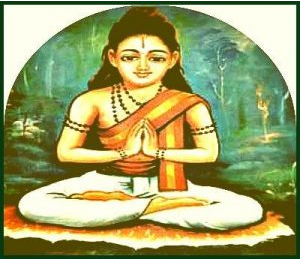
Introduction
Sivavakkiyar is one among 18 Siddhas and considered as a person who was against caste discrimination. He belonged to the family of gold smiths, and his parents were sincerely devoted to Lord Shiva. It is believed that he lived a thousand years ago.
Sivavakkiyar Siddhar was born by reciting Lord Shiva’s holy name. Hence he was called by the name Sivavakkiyar. His parents were insisted him to become a great siddha, and hence he met the siddhas to learn various subjects from them.
He was an expert in Siddha medicine, Yoga and meditation.
Since Sivavakkiyar Siddhar was a great poet, he wrote lot of devotional songs on Lord Shiva.
He got the spiritual energy by worshipping goddess sakthi.
Hinduism, especially Shaktism (a theological tradition of Hinduism), Shakti (Devanagari: शक्ति, IAST: Śakti; lit. "Energy, ability, strength, effort, power, capability") is the primordial cosmic energy, and represents the dynamic forces that are thought to move through the universe. This energy is thought of as creative, sustaining, as well as destructive, and is sometimes referred to as auspicious source energy.
Shakti is sometimes personified as the Creatrix, and is known as "Adi Shakti" or "Adi Para Shakti" (i.e., Primordial Inconceivable Energy). In Shaktism, Adi Parashakti is worshipped as the Supreme Being/God. On every plane of creation, energy manifests itself into all forms of matter; these are all thought to be infinite forms of Para Shakti. However, the true form of Para Shakti is unknown, and beyond human understanding. She is described as Anaadi (with no beginning, no ending) and Nitya (forever).
-- Shakti, by Wikipedia
He was against caste, creed, gender and religion. He treated all the people as equal and respected everybody.
He asked the people to chant the glory of god, and by reciting his mantra and name, in order to attain spiritual enlightenment. He went to kasi and learnt vedas and other divine scriptures.
He attained Siddhi at kumbakonam. Pujas are performed regularly on Full Moon Day. Those who pray to him with sincere devotion in mind, are blessed with good health and wealth, and also give peacefulness in life. Praying him on Mondays will give good results in our life. By worshipping him all the evil effects of the Nava Grahas will be cleared immediately, and we can attain all the prosperity in our life. All problems related to black magic, mental disorder, suffering from unwanted, negative and suicidal thoughts will be removed from our mind, if we worship him and chant his name sincerely as a daily practice.
IMPORTANCE
He was a great siddha, and cured the diseases of the people through his siddha medicines. He also invoked his followers to the spiritual path and asked them to worship Lord Shiva regularly, in order to attain MUKTHI.
Source: archive.org: Shiva Purana - English Translation
Mukti (मुक्ति) refers to “salvation”, which are mentioned as obtainable through the worship of Śiva, according to the Śivapurāṇa 2.1.14:—“[...] for achieving glory with plenty of vehicles, worship for a thousand times shall be performed. A person desiring salvation (mukti) shall worship Śiva five crores of times with deep devotion. [...] with Śamī leaves he will secure salvation (mukti). With Mallikā flowers he will secure an auspicious woman”....
Source: Shodhganga: The saurapurana - a critical study. Mukti (मुक्ति) refers to “release” according to the Purāṇas.—The word mokṣa means release (mukti) and it denotes release from the bondage of the mundane life and the repeated cycles of birth and death. [...] The Purāṇas which are dedicated to the glorification of a particular deity uphold that emancipation consists in reaching the blessed region inhabited by that deity.
The Saurapurāṇa refers the term like mokṣa, mukti, nirvāṇa and nirvṛti for emancipation. This Purāṇa has declared in undubious terms that the realisation of identity between the individual and supreme consciousness breaks the fetters of this worldly existence and the devotee gets parama nirvāṇa. It is by means of unbounded grace of Lord Śiva that an individual self can expect to reach this highest state of redemption. It is a divine gift conferred upon a devout devotee of Śiva. [...] Śiva gives mukti to his devotees and it is only Śivabhakti which is able to free a person from the bondage of Saṃsāra....
Source: archive.org: A History of Indian Philosophy (vaishnavism). Mukti (मुक्ति, “emancipation”) is the realization of God, accompanied as a consequence by that cessation of the bondage of egoism which is the same thing as existence in one’s true nature. Emancipation (mukti) may be achieved both in life and after death; when one realizes the true nature of God, one’s false apprehension of His nature vanishes and this is one’s state of mukti; at death also there may be a revelation of God’s true nature, and a direct and immediate realization of His nature as God. This existence in one’s own nature is the same thing as the realization of one’s own nature as the supreme soul (paramātman). Bhakti is also described as being itself the emancipation (mukti). True philosophic knowledge (tattva-jñāna) is the secondary effect of bhakti.
Source: Pure Bhakti: Bhagavad-gita (4th edition). Mukti (मुक्ति) refers to “complete emancipation from the bondage of the material energy that is expressed by the false conceptions of ‘I’ and ‘mine’. There are five types of mukti: sārūpya -- obtaining the same form as Bhagavān; sāmīpya -- living in close proximity to Bhagavān; sālokya -- living on the same planet as Bhagavān; sārṣṭi -- having the same opulence as Bhagavān; and sāyujya -- becoming one with Bhagavān by merging with His bodily effulgence, the brahmajyoti. Of these five, sāyujya is rejected by the Vaiṣṇavas”. (cf. Glossary page from Śrīmad-Bhagavad-Gītā).
-- Mukti, by Wisdom Library
He asked the people to realize the god from their own soul, since god is dwelling in everyone’s soul.
He solved various problems of the people through his spiritual energy. He was praised and admired by the people for his good behaviour and for containing great yogic powers.
It is believed that he chanted shiva mantra for several millions of time during his life time.
Let us worship this great siddha and be blessed.
“OM SREE SIVA VAAKIYARE NAMAHA”
“OM NAMAH SHIVAYA”
“OM SAKTHI PARA SAKTHI”
*****************************
Archive for "Sivavakkiyar"
by Old Tamil Poetry
Accessed: 4/11/22
Sivavakkiyar – 26
O’ humans, you believe in illusions, build a house, offer sacrifices due,
and live with your women, kids, kinsfolk and cattle;
When your palm-leaf* turns up at the impartial judge’s** hand and he calls you,
this body of yours won’t be worth even the price of a begging bowl.
* Palm-leaf in which one’s fate is written
** Impartial judge – Lord of death who doesn’t differentiate between people
In this poem Sivavakkiyar talks about impermanence of material aspects of life. Human beings spend their time building houses, offering sacrifices to God and live surrounded by near and dear ones thinking it is forever. They believe in this illusion. But once their time is up and palm-leaf in which their fate is written turns up in the hands of the God of death, this body becomes useless. It will not be worth even the price of a begging bowl.
Siddhar poems don’t have any established commentaries. So some times it becomes difficult to interpret the hidden meaning. ‘House’ here can be read as ‘Human body’ too. Then the poem becomes you take care of this body and work for its pleasures thinking this illusion is true, but once your time is up this body is worth nothing.
Siddhar – Sivavakkiyar – 133
Are there two Gods, yours and mine?
Will there be two Gods, here and there?
Primordial God, who is everywhere, isn’t he one?
Those who say otherwise, will die of rotting mouth.
Sivavakkiyar, in this verse, curses those who try to split people in the name of God. He doesn’t pull back his punches. He says “If God is all powerful how can there be two Gods, yours and mine. He who was at the beginning, is one. Those who say otherwise, their tongues will rot and they’d die.”
Siddhar Sivavakkiyar, dated to around 10th Century CE (?) was one of the leading rebel poets in Tamil literature. Siddhars were iconoclastic rebels whose thoughts were against the organised Vedic religion. Their main idea was one had to find God within oneself and not rely on temples and rituals.
Siddhar – SivaVakkiyar – 13
What am I? What are you? What’s that between (us two)?
O’ materialists who answer what’s a ruler and what’s a guru –-
(do you know) What’s created? What’s destroyed? What’s the place
that is beyond the beyond? It’s the name of Rama Rama Rama.
What is this thing called you and that is called me? What is that thing between us two. You materialists can answer who is a Guru or who is a King. But can you answer What is created, what is destroyed or what is this place that is beyond the beyond? You can’t. The answer is the name of Rama, who is everything in this world.
Sivavakkiyar 159-160
Vedic priests never ate fish, neither then nor now,
isn’t fish inhabited water what they drink and bathe in?
Vedic priests never ate deer meat, neither then nor now,
isn’t sacred thread worn over deer skin*?
Vedic priests never ate goat meat, neither then nor now,
isn’t goat meat offered in your worship though?
Vedic priests never ate cow meat, neither then nor now,
isn’t cow meat the manure in which vegetables grow.**?
In these two verses he mocks the Vedic priests who abhor meat. He says they abhor meat and flesh, but isn’t it part of their daily lives.
*Krishnajina – deer skin over which sacred thread is worn.
**My interpretation – Dead cows were buried in the farms in which they were raised. Hence they became manure for vegetables that vegetarians eat.
Sivavakkiyar – 434
A solid stone you choose and break it into parts two;
the stone at entrance, you tread on till it’s worn smooth;
the stone at the sanctum, with flowers and water you shower;
Tell me, which one of these is fit for the Supreme power.
In this poem he asks which of these stones is God? There is no difference between these stones as they are from the same rock. One part of it is laid at the entrance and another worshiped as deity. So God is not in these stones, but in your heart. This iconoclasm is the leit motif of his poems.
Siddhar – Sivavakkiyar – 521
Worshiping a put up stone as God, showering it with flowers
and intoning mantras under your breath -– what’s the use?
Will the put up stone speak when He is within you?
Will a cooking pot know the taste of food?
In this poems he mocks those who worship idols. “God is inside each one of us. What’s the point in worshipping a stone and going round it intoning mantras?” The last line is what stands out in the poem. “Though tasty food is cooked in a cooking pot, it does not know the taste of that food. So are the idols we worship. They are but stones which we have made into God. The God whom you worship is inside us.”

